Precision Spraying: AI Drift Reduction Tips
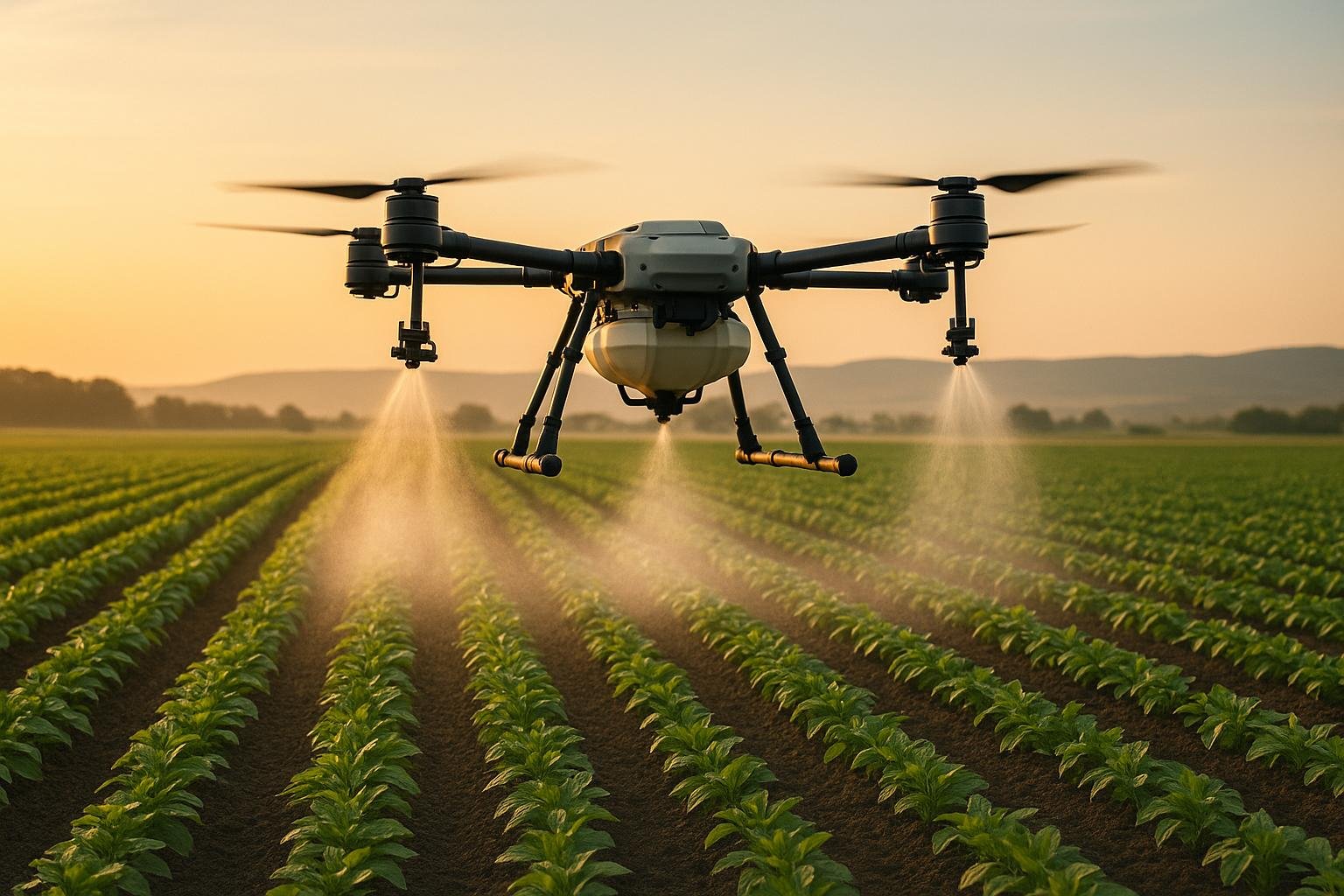
AI-powered systems are transforming pesticide application in agriculture by reducing drift, saving costs, and improving accuracy. Here's what you need to know to get started:
- Key Benefits: Cuts chemical waste by 20–30%, improves spray accuracy, reduces off-target drift, and ensures EPA compliance.
- Setup Essentials: Calibrate sensors, update AI software, and check weather conditions (e.g., wind below 15 mph, temperature below 85°F).
- Spraying Tips: Use drift-reducing nozzles, maintain a boom height of 24 inches or less, and adjust droplet size based on humidity.
- Real-Time Adjustments: AI monitors wind, temperature, and humidity to adapt spray patterns and ensure even plant coverage.
- Post-Spray Checks: Review drift data, plant coverage, and safety zone performance to refine future applications.
- Maintenance: Regularly clean nozzles, calibrate sensors, and update software for accurate and efficient operation.
These systems are easy to integrate with existing equipment and can deliver a strong return on investment within 2–3 growing seasons. Proper setup and maintenance are key to unlocking their full potential.
AI Helps This Robot Reduce Herbicide Use

Before Spraying: Setup Steps
Getting your AI drift reduction system ready is key for accurate pesticide application. Here's how to ensure everything is in place.
Check AI System Setup
Start by confirming that every component of your system is functioning as it should. Make sure the weather sensors - tracking wind, temperature, and humidity - are properly connected and calibrated. Update your AI software to take advantage of the latest drift prediction features and bug fixes. Clean and calibrate the visual sensors responsible for plant detection, and double-check your GPS accuracy to maintain a boom height of 24 inches or less above the crop canopy [3].
Once your system is ready, turn your attention to the weather.
Check Weather Status
Spraying under the right weather conditions is critical. Use the table below to ensure conditions are within safe limits:
| Weather Factor | Safe Range | Action Required |
|---|---|---|
| Wind Speed | Below 10–15 mph | Delay spraying if wind speed is too high |
| Temperature | Below 85°F | Avoid spraying during temperature inversions |
| Relative Humidity | Above 50% | Adjust droplet size if humidity is too low |
| Delta T | 2–8 | Ideal range for spraying |
Automated alerts can notify you if conditions fall outside these ranges [4]. Pay extra attention to temperature inversions, which happen when cooler air near the ground is trapped under warmer air, increasing the chance of drift.
Once weather conditions are confirmed, it's time to fine-tune the nozzle settings.
Set Nozzle Controls
Proper nozzle adjustments are essential for reducing drift and achieving precise application. Follow these guidelines:
- Use drift-reducing nozzles like TeeJet Air Induction, AIXR, or TTI series.
- Set operating pressure between 30–40 PSI to produce coarser droplets.
- Adjust spray angles to 110° or more to maintain the correct boom height.
- Program a carrier volume of 20 gallons per acre or more [3].
If you're using Venturi Air-Induction nozzles, stick to the pressure ranges recommended by the manufacturer [1]. The system can also automatically adjust settings when guar-based drift control agents are in use, ensuring optimal performance [2].
With these steps completed, your system will be ready to spray efficiently and responsibly.
During Spraying: Key Steps
Track Drift Risk
Real-time drift monitoring is a critical function of AI systems during spraying. Using multiple sensors, these systems continuously process data to evaluate conditions and automatically adjust to reduce off-target drift [4].
| Parameter | AI Adjustment Thresholds | System Response |
|---|---|---|
| Wind Speed | 15 mph | Reduces droplet size and ground speed |
| Temperature | 85°F | Modifies spray pattern and droplet size |
| Humidity | 50% | Adjusts carrier volume and pressure |
| Boom Height | 24 inches | Auto-adjusts using LIDAR readings |
By dynamically adapting to drift risks, the system ensures precision in application. After addressing drift, the focus shifts to verifying consistent plant coverage.
Scan Plant Coverage
Once drift risks are managed, the next step involves ensuring even plant coverage. AI systems use LIDAR to generate real-time 3D maps of the crop canopy. These maps are enriched with data from various sources:
- Weather conditions
- Satellite imagery
- LIDAR measurements
- Historical field data
- Ground sensors [5]
This integrated approach helps confirm that the application is uniform across all plants. Afterward, safety protocols are fine-tuned to protect both the field and its surroundings.
Set Safety Limits
AI systems are programmed to pause operations during unsafe conditions, ensuring safety remains a top priority. Key safety parameters include:
| Safety Parameter | Threshold | System Action |
|---|---|---|
| Wind Speed | 15 mph | Auto-stop spraying |
| Temperature | 85°F | Pause operations |
| Humidity | Below 50% | Halt spraying |
The system also logs weather conditions, spray settings, and field locations to meet EPA compliance requirements and facilitate audits [4].
Additionally, when drift control agents are used, the AI recalibrates its settings to account for these additives, maintaining peak performance while further reducing drift risks [2]. To achieve the best results, pair the AI system with EPA-approved drift reduction technology (DRT) nozzles [6].
sbb-itb-4d6a8dd
🚀 Ready to Reinvent Your Garden?
Join thousands of homeowners who have transformed their gardens using our AI design tool. Upload one photo to explore endless possibilities.
Get your AI garden designs →After Spraying: Results Check
Once the spraying is complete, it's time to evaluate how well the application performed by reviewing detailed post-spray reports.
Check Drift Results
Start by examining the drift data. The system compiles reports using multiple sensors to provide insights into drift extent and droplet distribution. Look at these metrics carefully, comparing them to the target boundaries you set earlier. If the drift exceeds acceptable limits, tweak your settings to minimize issues in future applications.
Review Coverage Data
Next, assess the spray coverage. The AI system generates reports that highlight overall uniformity, pinpoint under-applied areas, identify zones with optimal coverage, and flag spots that may need a second pass. Compare this data against your pre-set goals to spot any inconsistencies or equipment malfunctions that might have affected the application.
Check Safety Zones
Finally, verify the effectiveness of safety zones. These buffer areas are critical for protecting sensitive spots like water sources, property lines, or delicate crops. The system reviews drift containment data to ensure these zones were shielded properly. If any safety zone shows a failure in containment, consider adjusting buffer widths or tweaking spray parameters. Keep a record of these checks to refine your strategies for better drift control over time.
System Upkeep and Rules
Regular Checkups
Taking care of your AI spraying system is key to keeping it running smoothly and accurately. Start by routinely checking the hardware. Look at the nozzles - are they worn out, clogged, or spraying unevenly? If so, clean or replace them to avoid issues.
Don’t forget about the sensors. Regularly verify their calibration to avoid prediction errors caused by sensor drift. This step is crucial for maintaining accuracy.
Make sure your software is up-to-date. Enable automatic updates to benefit from improved drift prediction, enhanced safety features, and overall system performance. Additionally, run diagnostics from time to time to ensure all components are functioning as they should.
Summary
AI-driven drift reduction technology enhances precision spraying by leveraging real-time monitoring, automated adjustments, and predictive capabilities to minimize drift. Here's how it makes a difference:
Better Accuracy and Lower Costs
These systems cut chemical usage by 20–30% without compromising effectiveness [4]. By making on-the-spot adjustments in the field, they ensure proper coverage while reducing waste [3].
Increased Safety and Environmental Care
More than just efficient, these systems are designed with safety in mind. They drastically reduce off-target drift through real-time monitoring and automatic tweaks. With EPA verification, they help safeguard sensitive areas like waterways and nearby crops [6].
Ease of Use and Practical Benefits
Modern setups integrate seamlessly with specialized equipment, offering a strong return on investment within 2–3 growing seasons. Savings on chemicals, improved spray coverage, and automated compliance tracking make them a practical choice.
Regular maintenance, detailed record-keeping, and thorough operator training are essential to keep these systems running effectively and meeting compliance standards [6].
| Key Performance Area | Typical Improvement |
|---|---|
| Chemical Usage | 20–30% reduction |
| Application Precision | Real-time optimization |
| Compliance Documentation | Automated tracking |
| Environmental Protection | Verified DRT ratings |
FAQs
How does AI help minimize pesticide drift during spraying?
AI technology has become a game-changer in managing pesticide drift by fine-tuning spray patterns and adapting application methods on the fly. By taking into account variables like wind speed, temperature, and humidity, AI-driven systems can adjust droplet size and spray direction with pinpoint accuracy, ensuring pesticides hit only the intended areas.
The result? Less waste, reduced environmental harm, and more effective crop protection. For gardeners and landscapers, these advanced tools pave the way for healthier plants and more eco-friendly practices.
What are the key maintenance steps to keep an AI-powered spraying system running efficiently?
To keep your AI-powered spraying system running smoothly, regular upkeep is a must. Begin by cleaning the nozzles and filters after every use - this prevents clogs that could mess with spray patterns. It's also important to check the sensors and cameras for any dirt or debris since these are key to the system's accuracy.
Don't forget to look for software updates now and then. These updates can improve performance and fix bugs. Make it a habit to review calibration settings to ensure the application rates stay precise. And if you notice any parts that are worn out or damaged, replace them without delay. These straightforward practices will help your system work efficiently and last longer.
What are the best weather conditions for precise spraying to reduce drift and ensure effective pesticide application?
To get the best results and minimize pesticide drift, it's important to spray under calm weather conditions. Look for wind speeds between 3–10 mph - this range helps ensure the pesticide stays on target without drifting too much or being applied unevenly. Steer clear of very hot days (over 85°F) or times when temperature inversions occur, as these conditions can make the pesticide move unpredictably.
The ideal times for spraying are usually early in the morning or late in the afternoon. During these periods, temperatures are cooler, and winds are generally lighter, making it easier to control the application. Always check your local weather forecast and, if possible, use tools or sensors to confirm real-time conditions before starting the job.
🎨 Visualize Your Dream Garden Today!
Transform any outdoor space into a professional landscape design in minutes. Just upload a photo, choose your style, and let our AI do the rest.
Start your garden transformation now →Related posts
Related Articles

Revolutionizing Garden Design: Exploring the World of Garden Generator AI
Discover how AI-powered garden generators are transforming the way gardens are designed and maintained. Explore the benefits, challenges, and future implications of this cutting-edge technology.
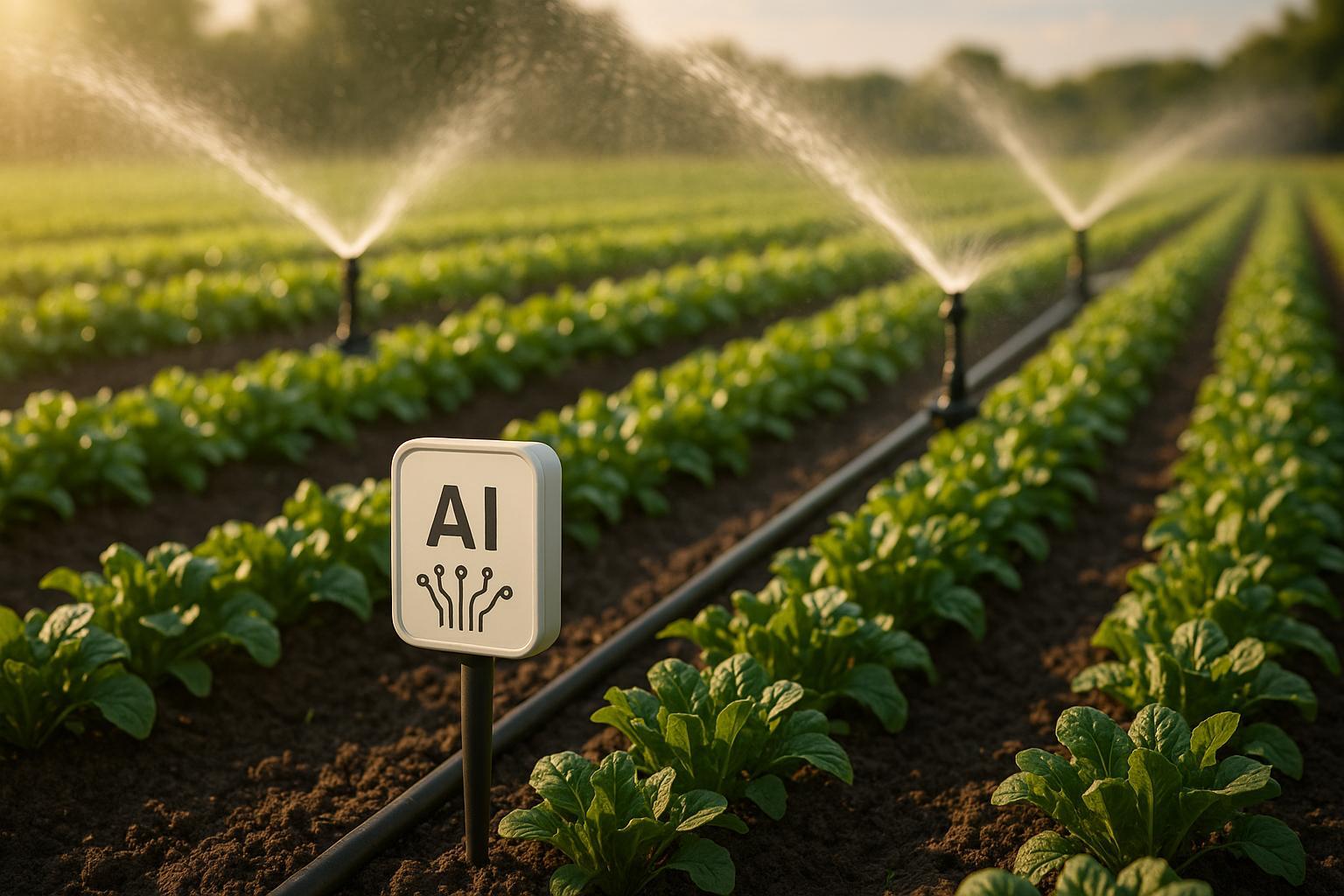
Top 7 AI Features for Smart Irrigation Systems
Explore how AI features in smart irrigation systems optimize water usage, enhance plant health, and boost crop yields effectively.

How AI Tracks Biological Control Agents in Real Time
Explore how AI enhances pest management by tracking natural predators in real time, reducing pesticide use, and fostering healthier ecosystems.
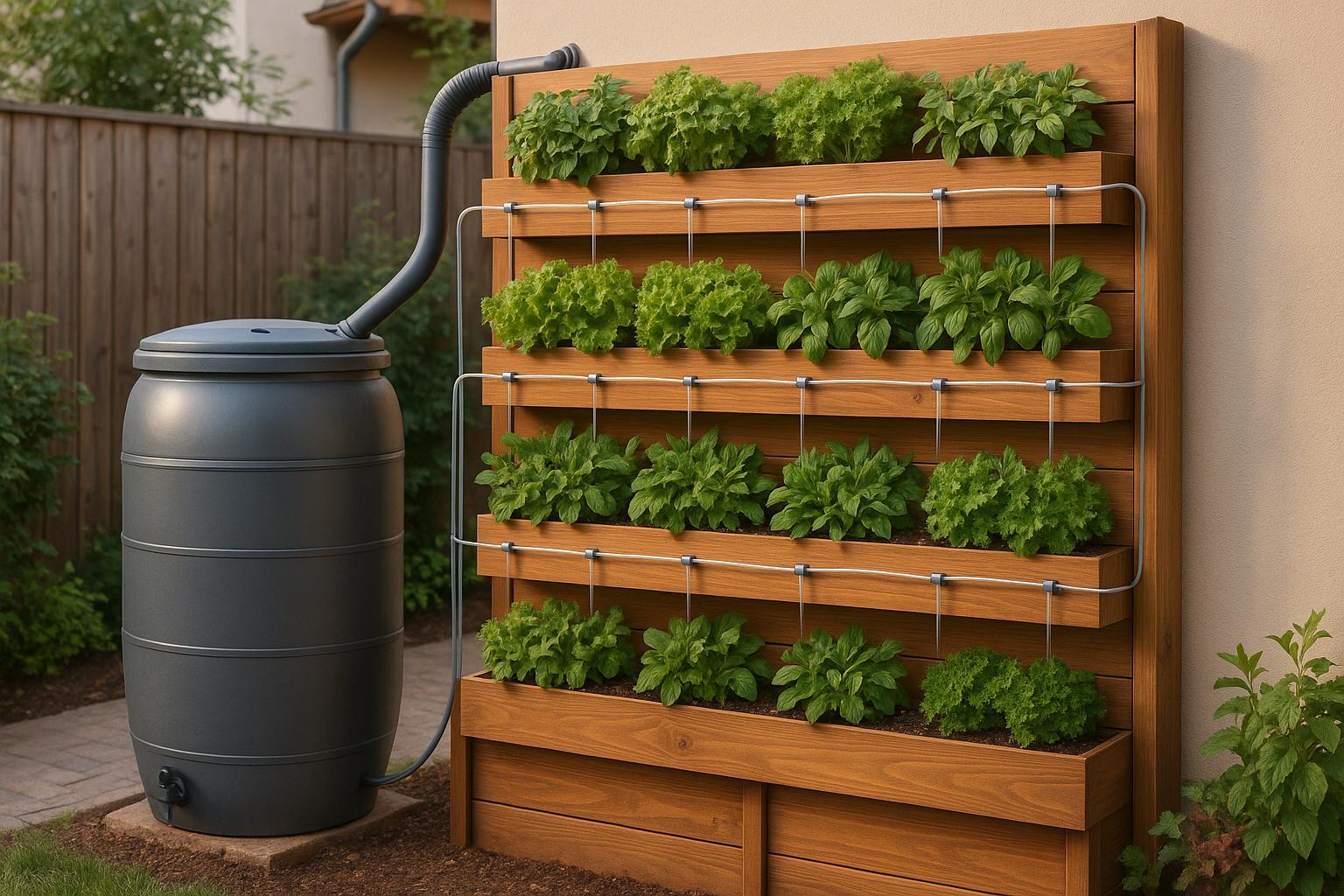
DIY Rainwater Systems for Vertical Gardens
Learn to create a DIY rainwater system for your vertical garden to save water and promote healthier plant growth with low-cost solutions.
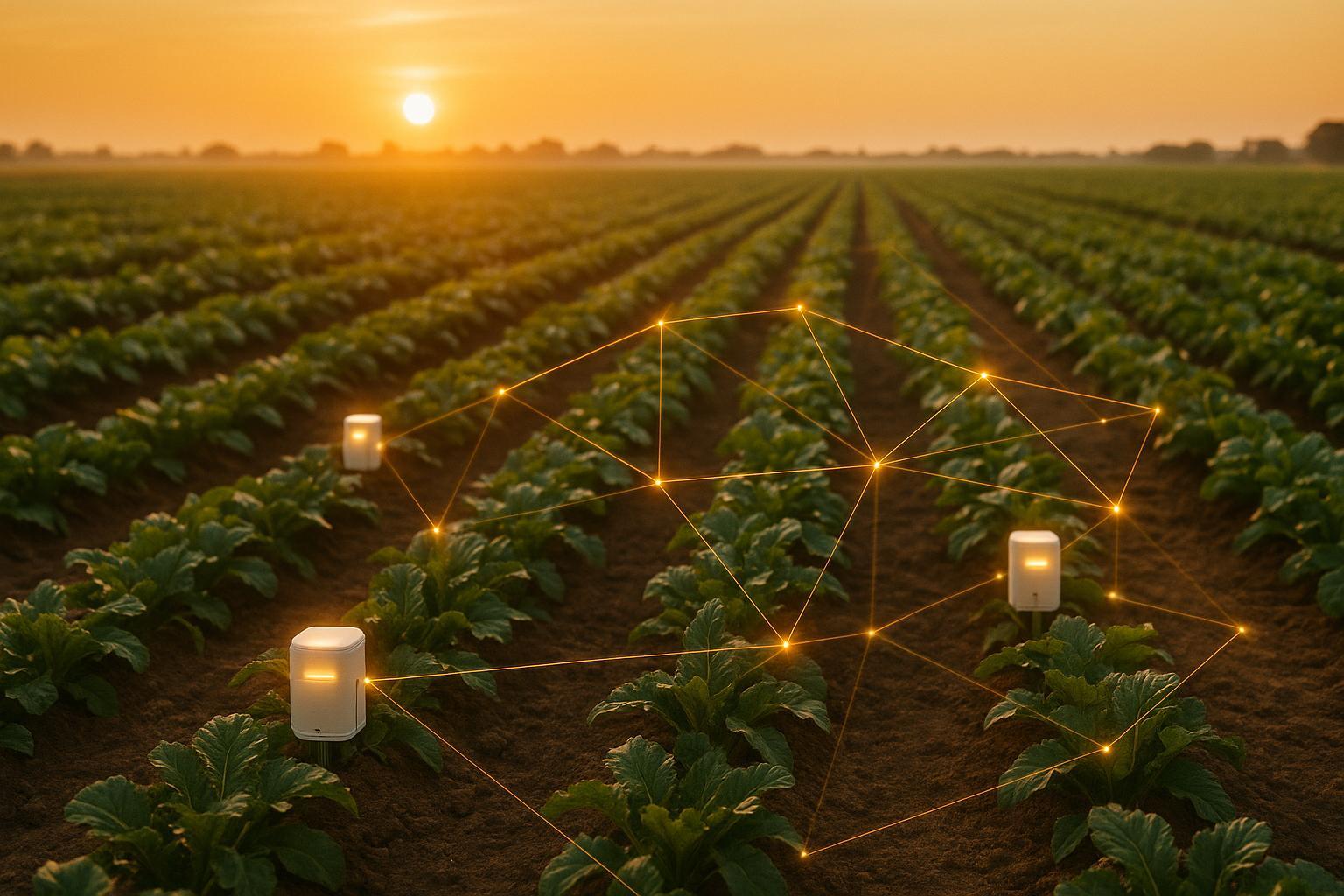
IoT Pesticide Networks: Data Security Risks
Explore the cybersecurity risks facing IoT pesticide networks in agriculture and discover effective strategies to enhance data security.
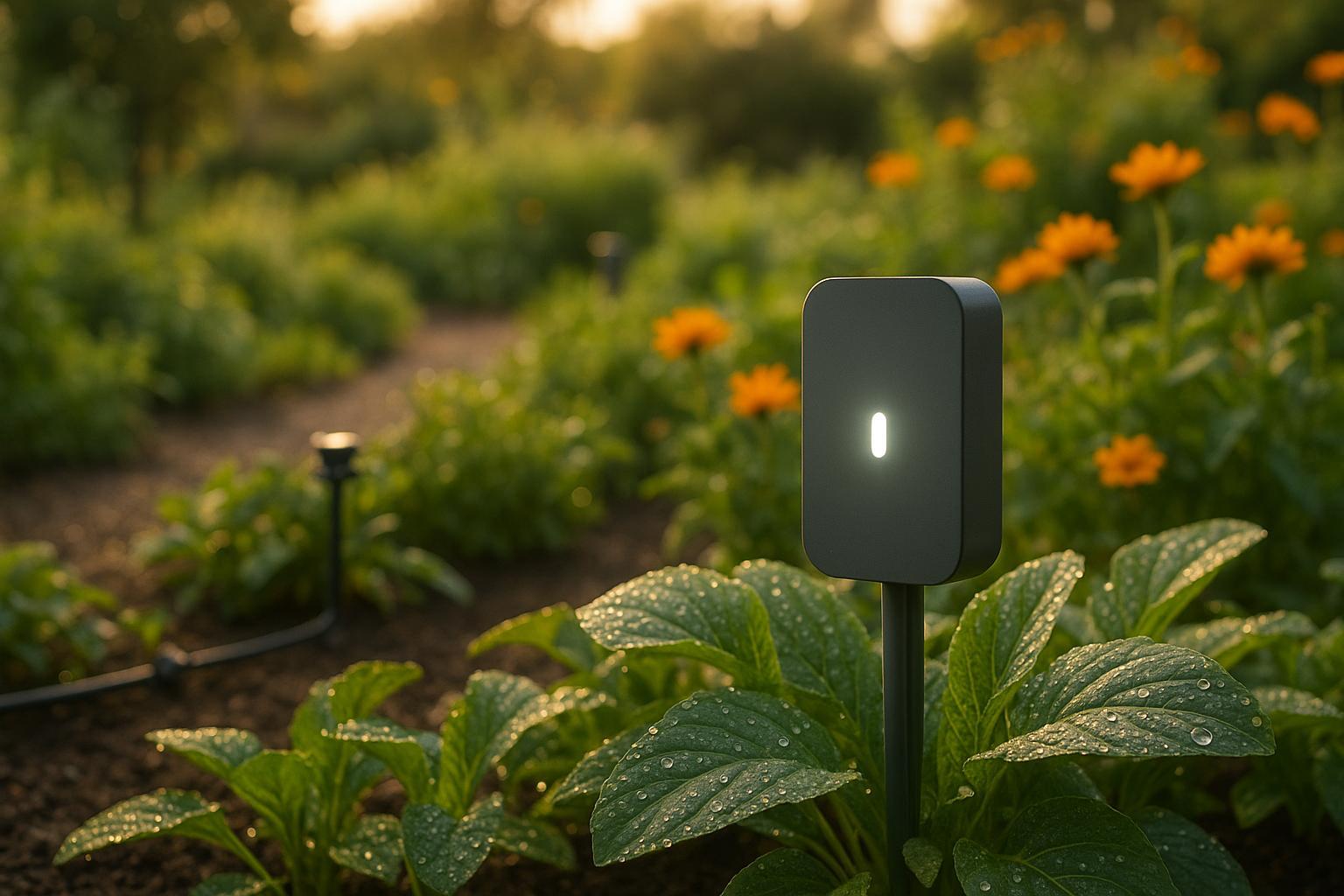
AI Sensor Fault Detection for Gardens
Explore how AI-driven sensor fault detection enhances garden management by ensuring accurate data for pest control and irrigation.